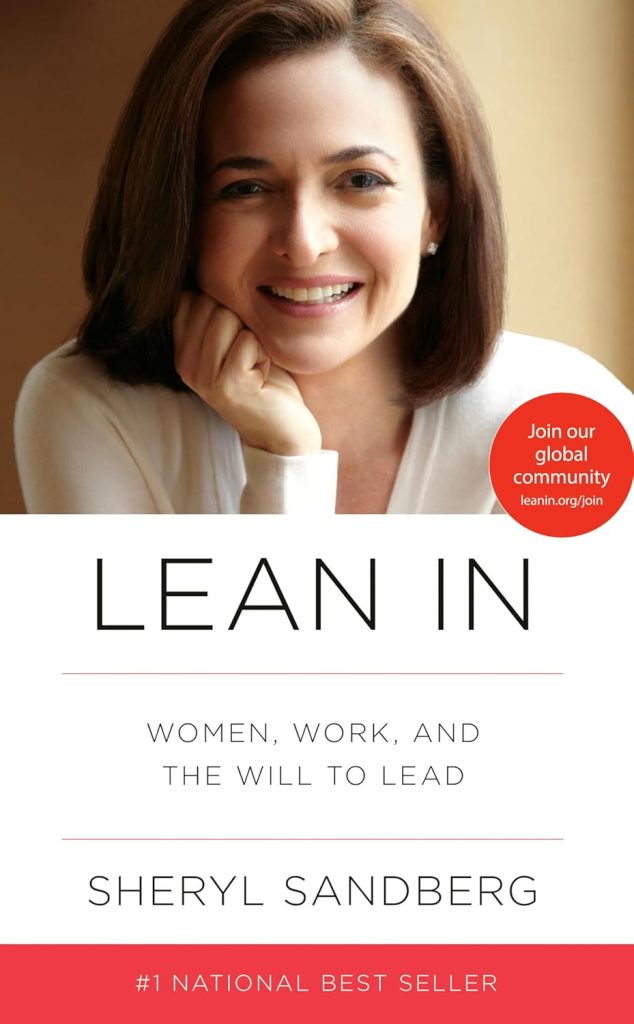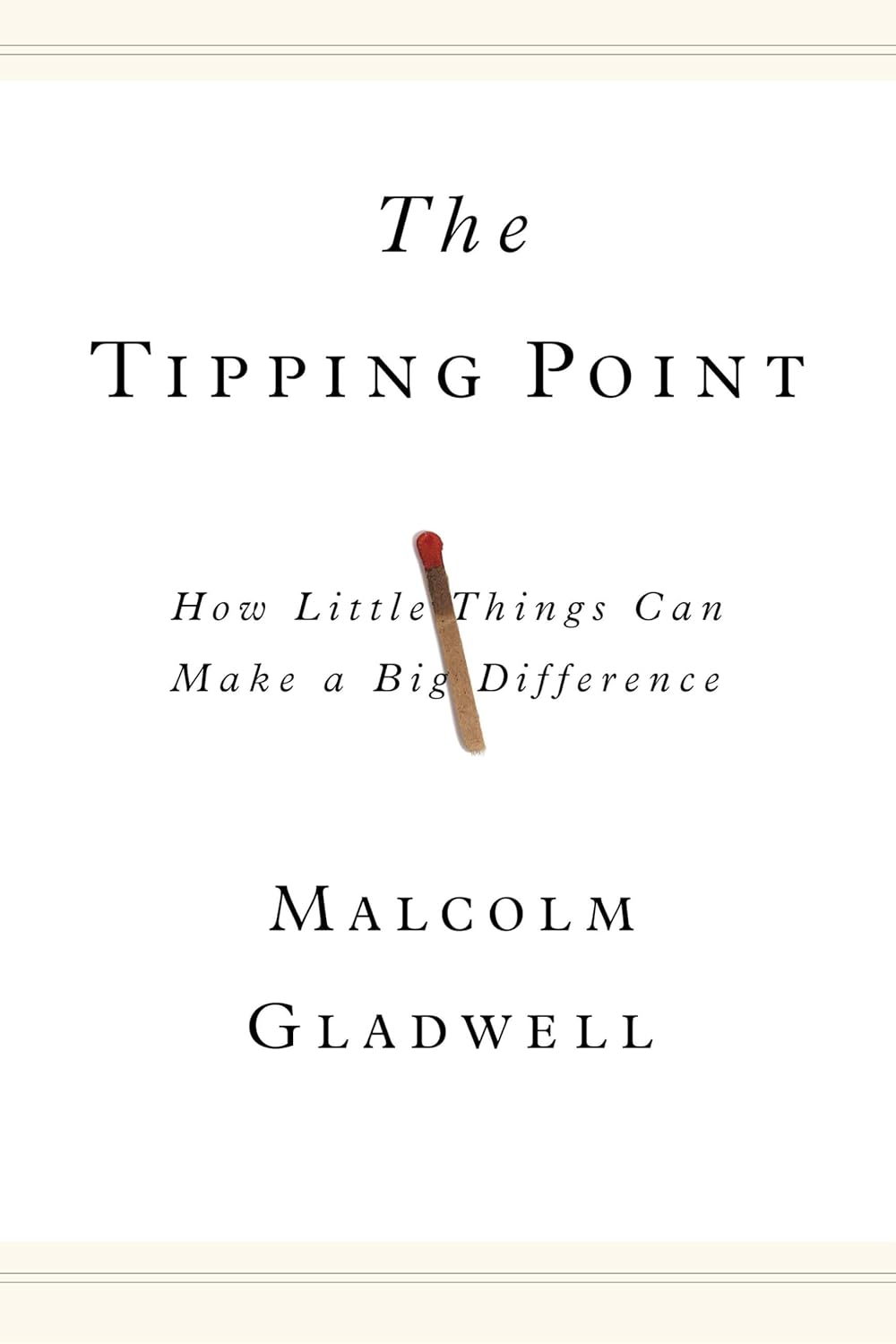
Buy The Book
Chapter
- ✦ Introduction: Internalizing the Revolution
- ✦ 1. The Leadership Ambition Gap: What Would You Do if You Weren’t Afraid?
- ✦ 2. Sit at the Table
- ✦ 3. Success and Likeability
- ✦ 4. It’s a Jungle Gym, Not a Ladder
- ✦ 5. Are You My Mentor?
- ✦ 6. Seek and Speak Your Truth
- ✦ 7. Don’t Leave Before You Leave
- ✦ 8. Make Your Partner a Real Partner
- ✦ 9. The Myth of Doing It All
- ✦ 10. Let’s Start Talking About It
- ✦ 11. Working Together Toward Equality
Lean In: Women, Work, and the Will to Lead

About
“Lean In: Women, Work, and the Will to Lead” by Sheryl Sandberg, former COO of Meta Platforms (Facebook), is a compelling call to action for women to pursue their ambitions in the workplace. Drawing on her own experiences and supported by research, Sandberg tackles issues like the leadership ambition gap, the double bind of success and likability, and internal barriers that hold women back.
She encourages women to “lean in” by taking risks, seeking challenges, and asserting themselves. Sandberg also emphasizes the importance of supportive partnerships, mentorship, and open conversations about gender equality. While sparking debate, “Lean In” aims to empower women to overcome obstacles, achieve their full potential, and reshape the dynamics of leadership.

Spark
Learn
Review
✦ Introduction: Internalizing the Revolution
As I reflect on my journey, marked by pregnancy challenges at Google and a delayed realization about pregnancy parking, I can’t help but see how far women have come, yet how much further we need to go. We stand on the shoulders of those who fought for basic rights, but true equality remains a distant vision. The stark reality is that men still dominate leadership roles globally, and progress on compensation has been dishearteningly slow.
I’ve witnessed these disparities firsthand, feeling the sting of being the only woman in the room. It’s time we confront the fact that our revolution has stalled, and the promise of equality isn’t the same as true equality. In an equal world, women would run half our countries and companies, and men would share the responsibilities at home.
To dismantle the barriers preventing women from reaching the top, we must address both external and internal obstacles. While societal factors like sexism and lack of flexibility persist, we also hold ourselves back through lack of confidence and internalized negative messages. Overcoming these internal barriers is crucial to gaining power and reigniting the revolution, person by person, until we achieve true equality.
✦ 1. The Leadership Ambition Gap: What Would You Do if You Weren’t Afraid?
My grandmother, born in a time when girls were simply “Girlie,” faced obstacles I can scarcely imagine. Pulled from school during the Depression to support her family, she was fortunate a teacher recognized her potential. Her story makes me wonder how different her life could have been, born just half a century later.
While my grandmother had limited opportunities, my mother was told teaching or nursing were her only options. Though she chose teaching and began a Ph.D., she dropped out after becoming pregnant with me. Even though I grew up in a traditional home, my parents had the same expectations for me, my sister, and my brother.
At college, my peers seemed equally focused on academics, and I didn’t think about my future career differently from the male students. But now, over twenty years later, the world hasn’t evolved as much as I believed it would. Highly trained women are scaling back and dropping out of the workforce in high numbers. My generation was too naive, and now girls know too much. They’ve watched their mothers try to “do it all” and decide that something had to give, usually their careers.
Girls outperform boys in the classroom, but career progression depends on taking risks and advocating for oneself, traits girls are discouraged from exhibiting. This may explain why girls’ academic gains haven’t translated into significantly higher numbers of women in top jobs.
There’s a leadership ambition gap. Data indicates that more men than women aspire to the most senior jobs. Professional ambition is expected of men but optional for women. “She is very ambitious” isn’t a compliment in our culture. I was encouraged to prioritize marriage over career. When graduating, I rejected international fellowships, believing a foreign country was not a likely place to find a husband. Later, I divorced, feeling it was a massive failure.
Without fear, women can pursue professional success and personal fulfillment. I hope you’ll ask yourself: What would I do if I weren’t afraid? And then go do it.
✦ 2. Sit at the Table
I recall hosting a meeting for Treasury Secretary Tim Geithner at Facebook, where his all-female team sat on the sidelines, reinforcing a lesson about internal barriers altering women’s behavior. This moment made me realize that in addition to societal obstacles, women face an internal battle.
At my Phi Beta Kappa induction, Dr. Peggy McIntosh spoke of feeling like a fraud, a sentiment I deeply understood. The impostor syndrome, where capable people are plagued by self-doubt, affects women more intensely. We consistently underestimate ourselves, judging our performance worse than it is, while men do the opposite. This was evident in surgery rotations and among potential political candidates. Even at Harvard Law, women rated their skills lower than men did.
My own insecurity began in high school and intensified at Harvard. I felt academically inferior, culminating in a disastrous grade on a paper. Despite later success, I always feared being exposed as a fraud. My brother, with his effortless confidence, highlighted my over-insecurity.
Through these experiences, I learned to challenge my self-doubt and undistort the distortion. I realized that I was not constantly headed for failure. One helpful tactic is “fake it till you feel it.” Research shows that assuming high-power poses can raise confidence. At Google, I observed that men grabbed opportunities more quickly than women, who often hesitated due to a lack of confidence.
Virginia Rometty, IBM’s CEO, learned that you have to be very confident, despite internal self-criticism, to take risks. Even when giving a speech on gender issues, I failed to notice that only men kept their hands raised for questions. It is important for both institutions and individuals to notice this behavior and promote women. Women must learn to keep their hands up, even if it means mastering feeling confident. This includes combating the feeling of inadequacy and learning to confidently “sit at the table.”
✦ 3. Success and Likeability
The core issue of success and likeability lies at the heart of why women get held back. Studies reveal that success and likeability go hand in hand for men, but for women, success often leads to being liked less. This bias stems from societal stereotypes that associate men with assertiveness and achievement while expecting women to be communal and nurturing. When women defy these expectations by being ambitious or focusing on results, they are often seen as selfish or aggressive.
I have witnessed that women face constant judgment. Even when recognized, women will be marked down for not being well-liked. To protect ourselves, we temper our ambitions, which causes “self-doubt becomes a form of self-defense.”
The double bind is further complicated by additional expectations and gendered stereotypes, so the women have to do more work without additional reward. When a woman help, the feeling of indebtedness is weaker. On the other hand, when a man helps a coworker, it’s considered an imposition and he is compensated with more favorable performance evaluations and rewards.
Men are allowed to be focused on their achievements, while loyalty is expected from women. Men have fewer negative reactions when negotiating. Women who negotiate for higher salaries are often seen as more demanding.
To counter negative reactions, women must be nice and emphasize collaboration. It’s like trying to cross a minefield backward in high heels. The ability to create a team effort leads to better results for women and for the workplace, since focusing on the team leads to better results.
There’s still a long way to go. Despite the progress, our culture needs to adjust to the idea of successful women, since current images still tend to reinforce stereotypes and reinforce negative stereotypes. I wish it were strong enough to ignore what others say, but experience tells me I often can’t. Allowing myself to feel upset, even really upset, and then move on—that’s something I can do.
✦ 4. It’s a Jungle Gym, Not a Ladder
A career isn’t a rigid ladder anymore, but a dynamic jungle gym with various paths to explore. I remember when Lori from eBay called, not to boast about her skills, but to ask how she could solve my biggest problem at Facebook. This unique approach struck me, and she quickly became invaluable, even taking a step back initially for a new role in recruiting.
The traditional career ladder is too restrictive, offering only up, down, or off options. The jungle gym allows for creativity, with multiple routes to the top and fantastic views along the way for everyone involved. People often ask about my carefully crafted career path, but the truth is, there wasn’t one. The idea that careers must be meticulously planned is misleading, especially in today’s changing job market.
My own journey is a testament to this. From a disastrous experience with technology in college to economics of spousal abuse thesis, to Mark Zuckerberg’s age when I graduated, nothing suggested I’d end up where I am today. My parents instilled the values of helping others and repairing the world which influenced my choices, but even those choices didn’t suggest a clear trajectory.
Instead of rigid plans, I encourage focusing on a long-term dream and an eighteen-month plan, combining vision with flexibility. Embrace the jungle gym, seize opportunities, and don’t be afraid to explore uncharted territories. I’ve come to appreciate that success lies not in a straight climb, but in the ability to navigate twists, turns, and unexpected paths. My best advice is to solve immediate problems and seize opportunities. That approach is a way to excel in modern career progression.
✦ 5. Are You My Mentor?
I’ve observed a common theme: individuals, particularly women, often stress over finding a mentor, envisioning it as a formal, almost sacred, relationship. However, this perspective can be limiting and counterproductive.
I’ve heard countless times, “How do I get a mentor?” It’s as if they believe a mentor is a magic key to success. But this chase is often misguided. Instead of pursuing a formal title, focus on building genuine connections with people whose guidance you value.
I believe seeking a mentor should be more organic. Forge relationships with individuals you admire, those whose insights resonate with you. It’s about learning from them, seeking their advice, and incorporating their perspectives into your own decision-making. It’s about building a network of informal mentors who can offer different types of support and advice throughout your career.
I feel a strong mentor relationship evolves over time, based on mutual respect and shared goals. Don’t force it, but nurture genuine connections, express your aspirations, and be open to receiving feedback.
I’ve had many people who acted as mentors to me, they offered guidance and opened doors for me, and I am forever grateful for their help and kindness. It’s not about finding one perfect mentor; it’s about building a constellation of advisors who can support you along your journey.
I think you should focus on learning and growth. Be curious, ask questions, seek feedback, and demonstrate your commitment to your development. This will naturally attract individuals who are willing to invest in your success. And in the end, that’s far more valuable than any formal mentorship arrangement.
✦ 6. Seek and Speak Your Truth
I’ve found that embracing authenticity at work is crucial, yet it’s a delicate balance. We want to be genuine, but must also navigate professional expectations. Speaking your mind directly can be powerful, but I’ve also learned that sometimes softening the message or finding a more receptive time can make a huge difference. It’s not about being inauthentic, but about being strategic.
One challenge I’ve faced is finding my voice as a woman in leadership. Often, societal expectations push us to be agreeable, but effective leadership requires assertiveness. So, I’ve worked on expressing my opinions clearly and confidently, while still remaining approachable. I’ve also noticed how important it is to support other women in finding their voices. Mentoring and creating opportunities for them to speak up can create a more equitable environment.
Navigating criticism has been another essential part of my journey. Early in my career, I took feedback very personally, which was really painful. Over time, I’ve learned to separate the message from the messenger and focus on what I can learn from it. Now, I try to see criticism as an opportunity for growth and improvement, rather than as a personal attack. I’ve also realized that it’s okay to disagree with feedback and stand my ground when I believe in my perspective.
Finding my own leadership style has been a journey of self-discovery. I’ve experimented with different approaches, learning what feels most natural and effective for me. I’ve also realized that leadership isn’t about having all the answers, but about empowering others to contribute their unique talents and perspectives. Creating a culture of open communication, where everyone feels safe to speak their truth, is essential. And it’s through that, that we can all lean in together.
✦ 7. Don’t Leave Before You Leave
I’ve noticed that too often, women begin to scale back at work long before they actually need to. Whether it’s consciously or not, we often start thinking about having children or balancing family commitments years in advance, and this can lead to us taking our foot off the gas pedal in our careers. This can manifest in various ways – avoiding new opportunities, declining promotions, or simply not pushing ourselves as hard as we once did.
I believe that by preemptively downshifting, we limit our growth potential and potentially close doors before we even explore what could be possible. It’s almost as if we subconsciously begin preparing for a future we haven’t even fully decided upon, and this can hold us back from achieving our current goals.
It’s important to keep options open and continue pushing boundaries, striving for excellence in our roles as long as possible. By staying fully engaged, we increase our visibility and influence, positioning ourselves for greater opportunities down the line, even if our priorities eventually shift. When considering children, remember that it’s impossible to predict the future, and it’s equally important to acknowledge that a fulfilling career can enhance our roles as partners and parents. Don’t prematurely limit potential based on what is merely speculated.
Maintaining momentum at work can also provide a stronger foundation for negotiating flexible work arrangements or parental leave when the time comes. Demonstrating a strong track record of commitment and achievement gives more leverage when discussing your future with your employer. It’s about being proactive, not reactive, and shaping your career path on your own terms, rather than letting perceived limitations dictate your decisions. This mindset allows us to be fully present and invested in our current roles while remaining open to the possibilities that lie ahead.
✦ 8. Make Your Partner a Real Partner
When it comes to truly “having it all,” I’ve learned that choosing the right partner is paramount. I’m not just talking about romantic love, though that’s certainly important. I’m talking about finding someone who genuinely wants to share life’s responsibilities, both at home and in your career aspirations. Someone who sees your dreams as equally valid and worthy of support.
We need to debunk the myth that childcare and housework are solely “women’s work.” These are life tasks, and they should be shared equitably. When partners step up and take equal ownership, the entire family benefits. Women feel less stressed and more empowered, children see a model of equality, and relationships thrive on mutual respect.
It’s time to openly discuss expectations and create a partnership based on fairness, not traditional gender roles. This means dividing tasks like cooking, cleaning, childcare, and even emotional labor in a way that works for both individuals. It’s about being willing to compromise, communicate openly, and constantly re-evaluate the division of labor as life evolves.
For me, the biggest challenge I find myself facing is constantly striving for perfection. It’s tempting to try and control everything, especially when it comes to raising my children. However, I’ve realized that trusting my partner and letting him do things his way, even if it’s different from mine, is crucial for building a true partnership. I need to step back, relinquish some control, and let him be an equal parent.
We need to change our expectations of what is normal and fair. If a woman leaves work early to care for a sick child, no one questions her dedication. But if a man does the same, he is often seen as less committed to his job. This double standard perpetuates the idea that childcare is primarily the mother’s responsibility.
Ultimately, a true partnership is about respect, communication, and a shared commitment to building a life together, both inside and outside the home. Only when we embrace this ideal can we truly lean in and achieve our full potential.
✦ 9. The Myth of Doing It All
I am convinced that the term “doing it all” is a dangerous trap, particularly for women. It implies a false ideal: achieving perfection across all aspects of life simultaneously. This is simply not realistic or sustainable. We need to release ourselves from this pressure, recognizing that it’s okay to prioritize and make choices.
I learned this lesson firsthand when I was a young mother juggling a demanding career. There were countless moments of feeling overwhelmed and inadequate – like I was failing at everything. The reality is that there will always be trade-offs. Some days, work takes precedence; other days, family needs to come first. Accepting this ebb and flow is essential for maintaining sanity.
Furthermore, the notion of “doing it all” places an undue burden on women. Men are rarely held to the same standard. We need to challenge these societal expectations, recognizing that it is acceptable for both men and women to seek support and share responsibilities.
My plea is that we abandon the myth of perfection and strive instead for authenticity. Let’s be honest about our challenges, celebrate our imperfections, and embrace the messy reality of juggling multiple roles. Seek support, delegate tasks, and most importantly, be kind to ourselves. It is about making conscious choices and accepting that we cannot excel at everything, all the time.
Let’s redefine success not as achieving an impossible ideal but as living a life that aligns with our values and brings us joy. Forget “doing it all.” Embrace doing what matters most to you. By letting go of unrealistic expectations, we free ourselves to pursue our passions with greater focus and fulfillment. It’s also important to talk about this subject. Open up, communicate with your partner or your family, you will find this is very helpful.
✦ 10. Let’s Start Talking About It
I believe that open dialogue is essential to creating a more equitable world. We need to break the silence and actively discuss gender issues in our workplaces and homes. I’ve seen firsthand how uncomfortable these conversations can be, but they’re crucial for progress.
One strategy is to encourage mentorship and sponsorship, which is easier said than done. Many men shy away from mentoring women due to fear of gossip or misinterpreation, which is sad. We must create environments where these relationships can flourish. Furthermore, men should not just mentor women; they should also sponsor them, actively advocating for their advancement and recognizing their achievements publicly.
We have to examine our biases and challenge the stereotypes that limit women. Let’s be aware of the language we use and how it can perpetuate inequalities. For instance, we can reconsider using gendered terms like “manpower” or “chairman” in our professional settings.
I’ve often observed that women are hesitant to speak up in meetings or negotiate for themselves. When this occurs, leaders can make a conscious effort to solicit their opinions and ensure they receive the credit they deserve. Companies can also implement blind resume reviews to minimize unconscious biases during the hiring process.
At home, we need to share responsibilities fairly. We can discuss how household chores and childcare duties are divided and strive for a more balanced distribution. It’s not enough to simply “help out;” both partners need to take ownership and responsibility.
By talking openly and honestly, we can create a culture of inclusivity and empowerment, where everyone feels valued and supported. This means addressing difficult topics like pay gaps, sexual harassment, and unconscious bias. This will not only make our workplaces more fair, but also create a better world for everyone.
✦ 11. Working Together Toward Equality
As I consider the path forward, I believe achieving true equality requires a collaborative effort, dismantling ingrained gender roles that limit both women and men. We need to challenge the traditional view of women as primary caregivers and men as sole breadwinners, recognizing that both roles can be fulfilling for either gender.
To create lasting change, we must start with our children, teaching them to embrace their authentic selves, regardless of societal expectations. This means encouraging girls to be assertive and boys to be nurturing, fostering a generation that values diverse skills and perspectives.
In the workplace, we need to create environments where women feel supported and empowered. This includes implementing family-friendly policies, such as flexible work arrangements and affordable childcare, and addressing unconscious biases that can hinder women’s advancement.
Men also play a vital role in achieving equality. By actively supporting their partners’ careers, sharing household responsibilities, and challenging sexist attitudes, men can help create a more equitable society for everyone. We must also encourage men to take parental leave and be active participants in their children’s lives, breaking down the stereotype that childcare is solely a woman’s domain.
Ultimately, achieving equality is not just about benefiting women; it’s about creating a better world for all. By embracing diversity and valuing the contributions of all individuals, regardless of gender, we can unlock our full potential and build a more just and prosperous society. Let’s work together to create a world where everyone has the opportunity to thrive.
For People
– Young Professionals
– Aspiring Leaders
– Working Mothers
– Mentors
– Advocates for Gender Equality
Learn to
– Self-Advocacy Skills
– Confidence Building
– Negotiation Tactics
– Partnership Strategies
– Awareness of Gender Dynamics









